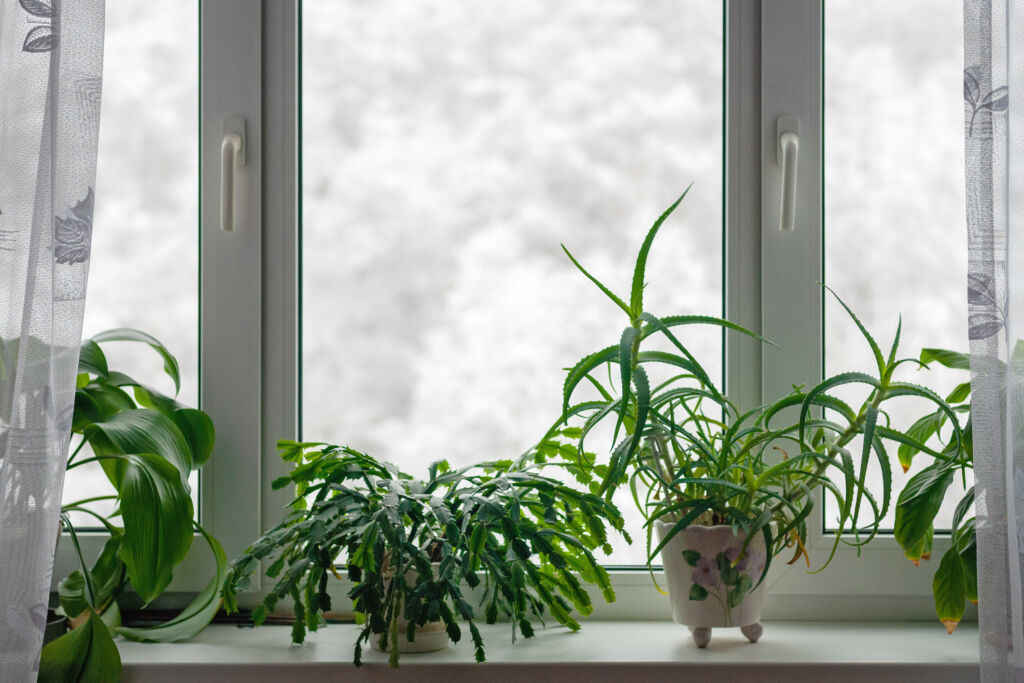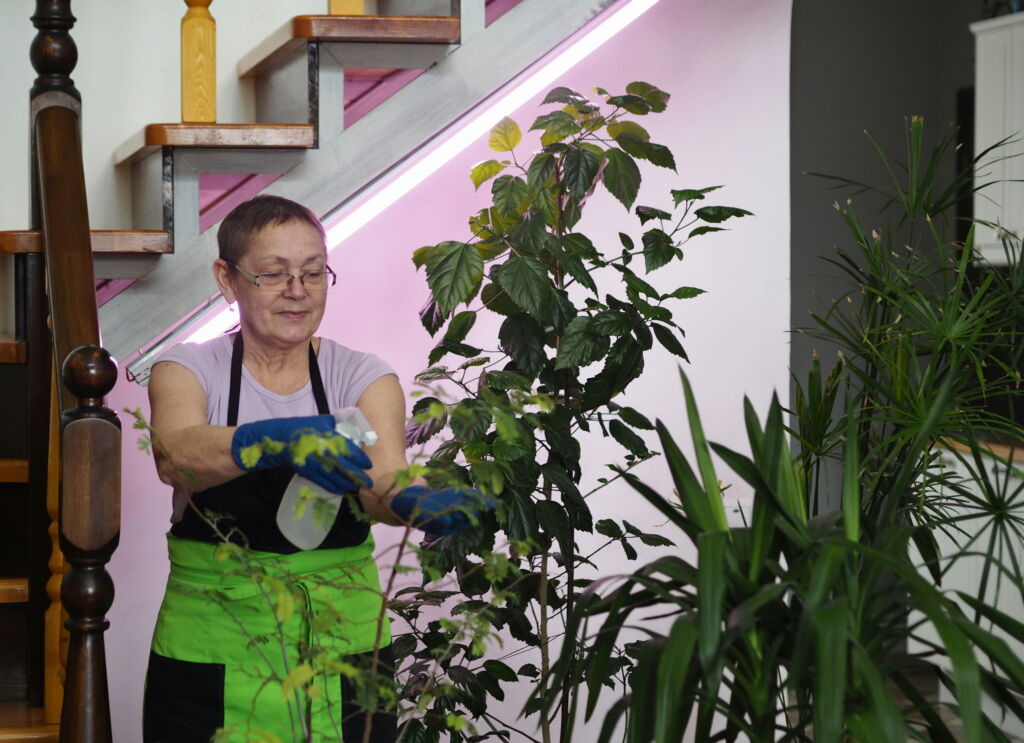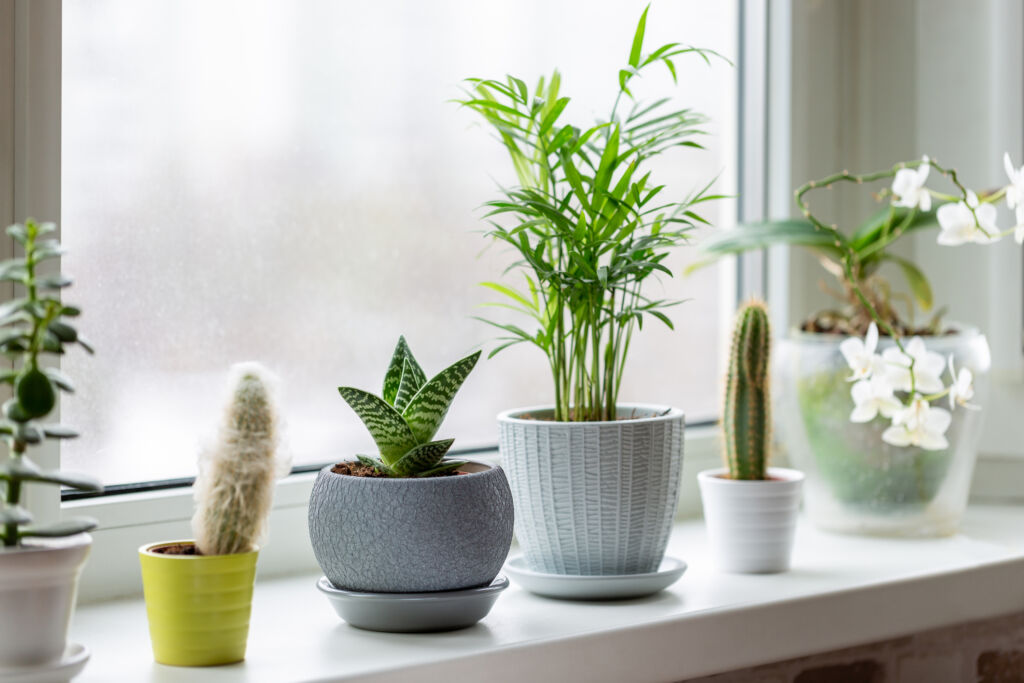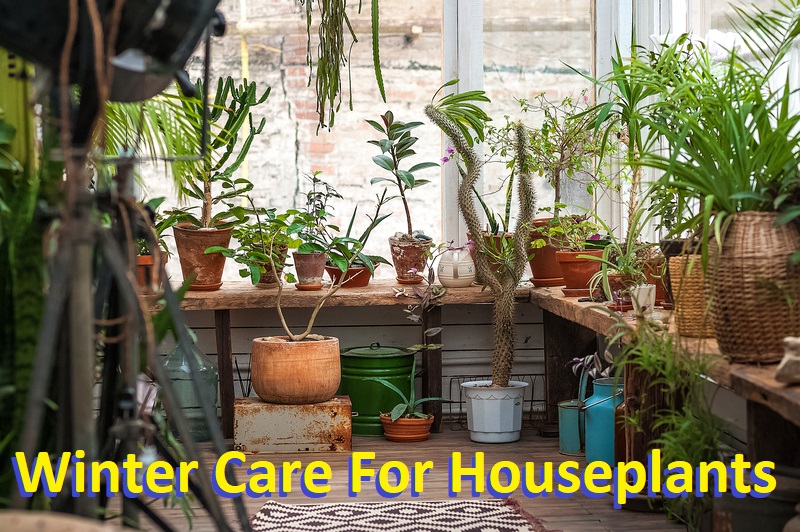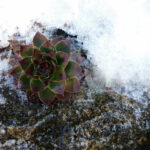HousePlantJoy is supported by our audience. When you purchase through one of our links, we may earn a small affiliate commission. As an Amazon Associate I earn from qualifying purchases. Your cost is not affected.
==================
Be Ready With Winter Care Of Houseplants
Winter care of houseplants is critical. Indoor plants will look bad without the correct measures during the colder months. They may lose their leaves, seem messy, and turn unhappy. Looking after them will help them stay intact and survive the harsh weather. Hence, it matters to prepare for their winter dormancy.
In this post, we will discuss what happens to houseplants and how to deal with them during winter. There may be gardening challenges along the way, but there are also solutions to problems. So you can read on for a few tips to keep your plants healthy, decorative, and happy when it’s cold outside.
Why Winter Care Of Houseplants Is Necessary
In a nutshell, bud or entire plant inactivity and abscission happen. During wintertime, plant metabolic rate slows when the days become shorter and chilly. The low temperatures result in the leaves losing chlorophyll. It means plants don’t absorb as much carbon dioxide in the air anymore. They also don’t suck up plenty of water and minerals from the soil. Plants stop producing the hormone called auxin, causing leaves to fall off. In response to stress, they produce ethylene and abscisic acid. These things hold back vegetative development and sprouting. Making adjustments to these changes is imperative to keep vegetation alive and well.
The goal of tending to them is to avoid disturbing them while they hibernate. Also, it helps to keep the plants comfortable, nourished, and protected altogether. With these measures, our indoor plants can rest, stay fine, and keep growing somehow. In their “hardened” state, they use their sap as a deicer and have more water in the roots. In that way, during wintertime, plants are susceptible to damage and wilting. Thus we need to take care of them if we want them to stay alive.
Reduce Watering Houseplants During Frost
Because of the cold weather, indoor vegetation requires less watering during the wintertime. Plant processes slow down this time. During fall, our garden friends save up water when they sense low temperatures. So they already have enough resources to support themselves when winter comes. Yet they still need to get some, considering they continue to lose it. Transpiration keeps happening, and they release vapor into the air through it. So be mindful of how you water your plants in the water.
Even if the soil is dry, try watering less. Depending on your plants, you may need to try misting or soil watering only once or twice a month. Besides, when you keep hydrating your plants this time, you may end up freezing the ground. An indoor garden may not do well when the temperatures become too low. Plants that aren’t resistant to frost may end up with rotting roots and limp or lifeless. So try to check your houseplants when you water them when it gets too cold. Ensure that the rooms where they are aren’t too humid too. Still, you shouldn’t hydrate them if they are doing well dry. Plants like succulents become dormant and have plenty of stored water.
Lighting For The Winter Care Of Houseplants
Daylight turns shorter late in the year. When this happens, plants aren’t getting as much sunlight as they used to. Even if their metabolism slows in winter, they still need light to thrive. Photosynthesis doesn’t stop. Hence, plants must keep getting sunshine even when it’s dark. You can place them in areas near windows and other openings where the light shines through. Rooms with windows facing the east and south side have the most sunlight coming in. So you have options for where to put your plants before and during wintertime.
Using artificial or auxiliary lights can help with this concern too. For this, having grow lights is practical. Their design makes them ideal for plant growth and home use. With them around, plants have all the light colors they need for optimal development. Plus, these items don’t consume and generate much energy and heat. We can say that they are safe for our garden companions and helpful in energy efficiency. Without these, fluorescent or incandescent bulbs will do. Expose your indoor garden to the light they produce for several hours daily for them to survive. Combining indirect and artificial lighting often yields the best outcomes. So be ready to turn and transfer your plants for light before winter arrives.
Temperature Stability Helps Plants Thrive
Not all plants are hardy or able to withstand unfavorable climate or weather changes. Some of our garden buddies wilt due to intense heat or freezing temperatures. It is why, even for indoor houseplants, controlling the hotness or coldness is crucial. Most plants can manage 65 to 75 Fahrenheit or 18 to 24 Celcius inside. When you see that their leaves are curling, discolored, and falling, it must be too cold. The same likely applies when they aren’t flowering but showing dark spots. So it pays to be watchful of your greenery to ensure its temperature. Work on it for it not to reach 50 Fahrenheit or 10 Celcius or below.
As a general rule, keep your plants away from areas close to cold drafts and heat sources. It means separating them from doors, windows, radiators, and fireplaces. Doors and windows without blinds and curtains can let heat escape. When that happens, freezing air goes in too. Heaters and stoves can burn foliage when plants are near. Yet putting insulators close by gives plants adequate warmth. Thus you may want to rearrange your plants and buy helpful supplies before winter hits.
Winter Pruning and Fertilizer Application For Houseplants
Avoid or at least limit cutting parts of plants because of abscission. It’s part of the crucial winter care of houseplants. Plants are the ones that decide which of their components fall off before and when winter comes. You may end up removing the wrong parts. But pruning is still helpful in extracting rotting and dead sections. Hence, there’s still a need to cut leaves, branches, stems, and roots. Besides, cutting off problematic parts makes plants manage wintertime better. With them out of the way, our garden buddies can focus their energy on their working parts. Yet it matters to limit the number of cuts made. The cold weather is already stressful for plants. So it’s best to have limited pruning sessions during winter.
Plants become dormant before the year ends and when the new year starts. During dormancy, they don’t take up as many nutrients as they’re used to having. Because of that, it’s sensible not to put a lot of fertilizer on them. For some plants, it’s unnecessary and dangerous. For those that need compost, they must have plant food early or before the ground freezes. Go for that with low nitrogen since there isn’t a need for too much photosynthesis. Choose the kind with high phosphorus to encourage plant hardiness too. Thus it’s crucial to cut down but put the right fertilizer late in fall or early winter.
Remove Pests From Houseplants During Winter
As part of the winter care of houseplants, check for the presence of insects. A pest infestation can happen right before or during wintertime. It’s because creatures like scale, mealybugs, and aphids try to survive too. They suck the sap out of plants as their way to nourish themselves. Plus, they take shade beneath the foliage and other parts. Thus it matters to wipe the plant leaves and extract the harmful insects. Using dishwashing or pesticidal soap can make plants pest-free. You can try wiping off the dust from plants to remove the spots where they thrive. So it matters to wipe houseplants clean.
Throwing out the trash near your houseplants can help ward off unwanted insects. It’s the same when you limit watering your plants. They don’t have reasons to visit and stay in your indoor garden when they have nothing to eat and drink. Since plants need light and attract insects, you can try putting barriers on them. Putting pest-resistant varieties near vulnerable types can help with this issue too. Thus you have various methods to control pests and make your plants thrive during winter.
Last But Not Least
When the creeping frost comes, winter care of houseplants is crucial. Plants need extra attention and tending due to their vulnerability. When it gets cold, they don’t demand constant watering. But they must have plenty of light and stable temperature. Still, cleaning and removing the pests from them is helpful. Thus you’ll keep your plants alive, healthy, and happy by sticking to these care methods.
We hope you learned some helpful things about indoor winter care of plants. With these tips, your tending may become lighter. If you have ideas or questions for us, please feel free to reach out. We love to hear from our readers. Thanks for taking some time to check our post and good luck with your plants in the winter.

